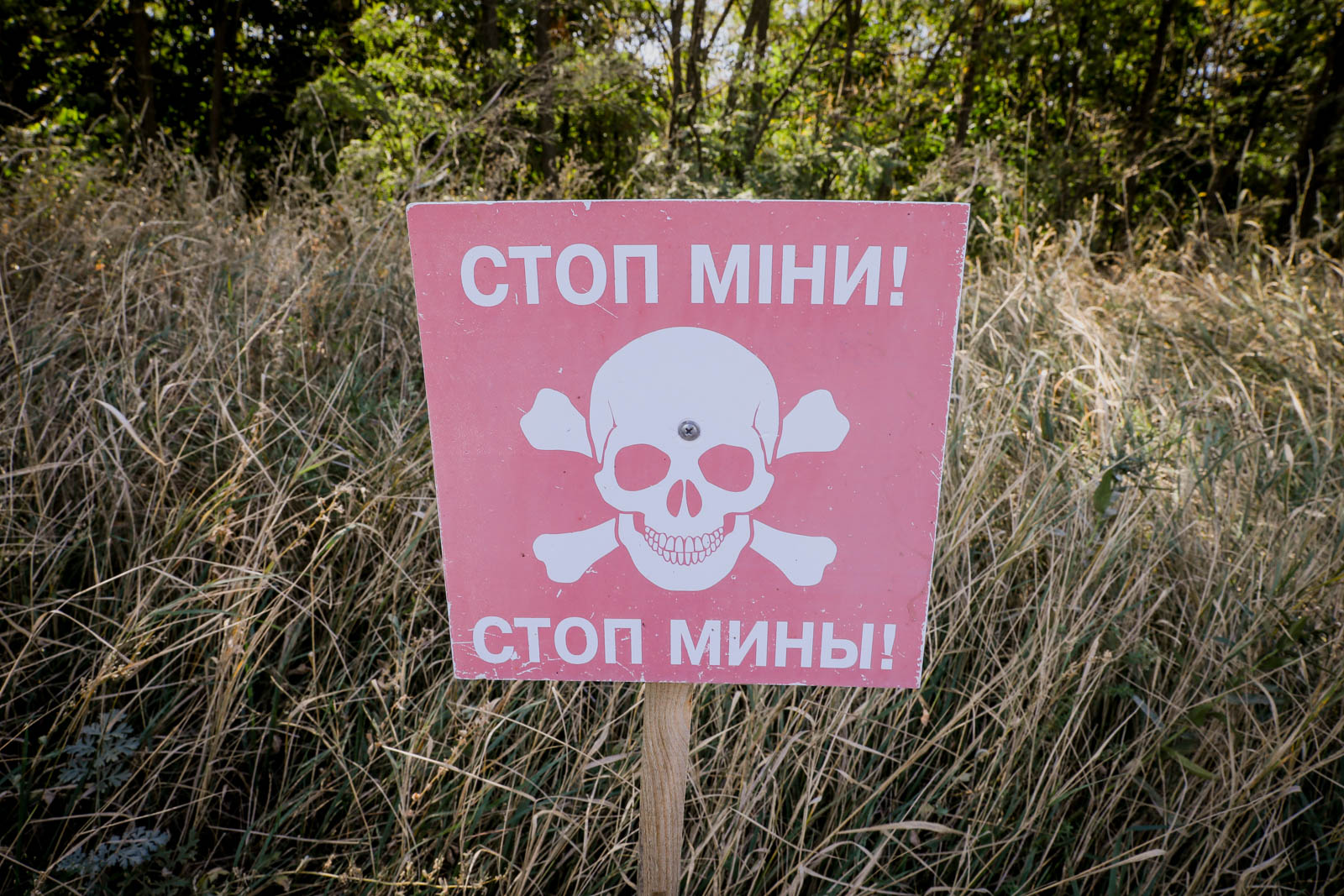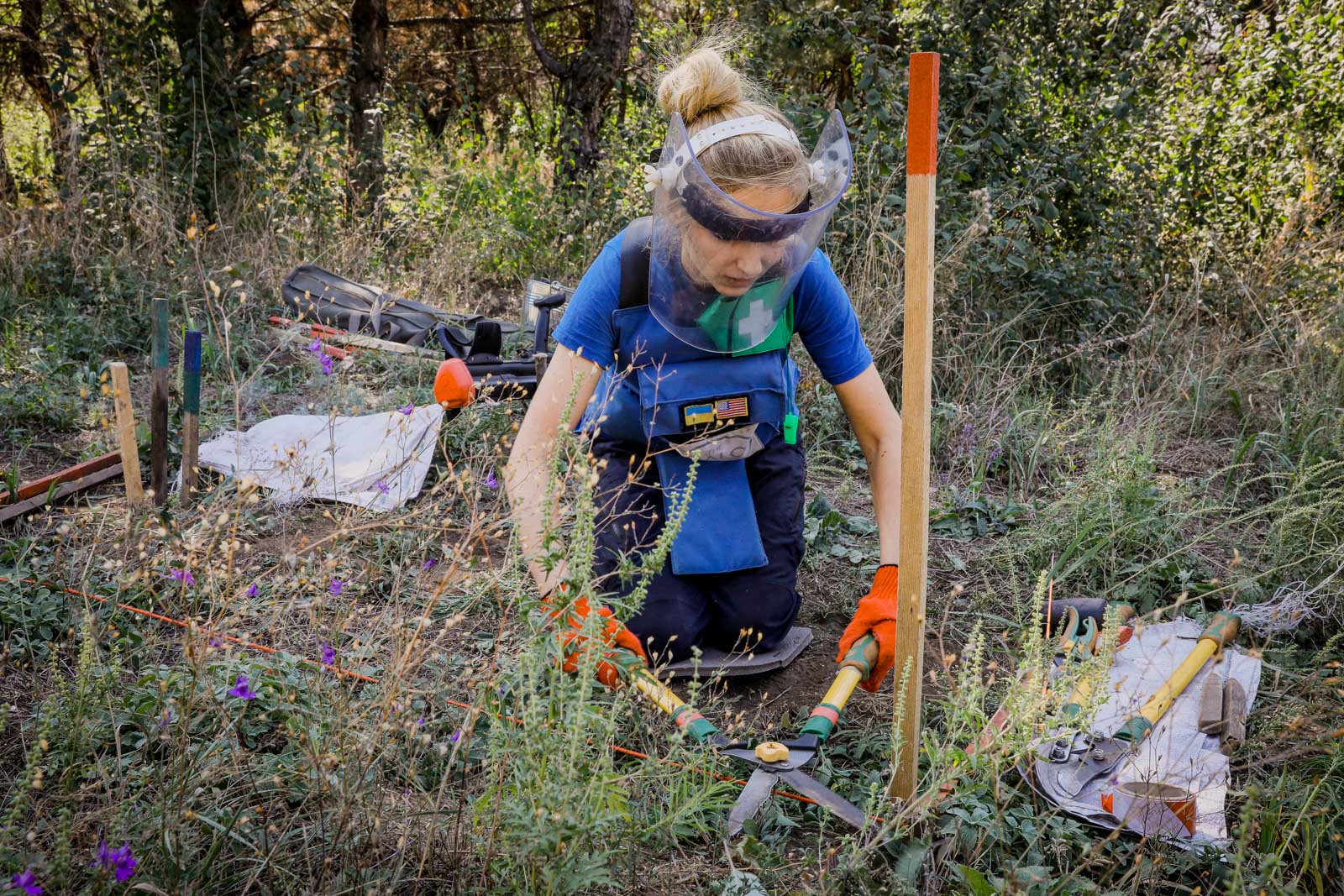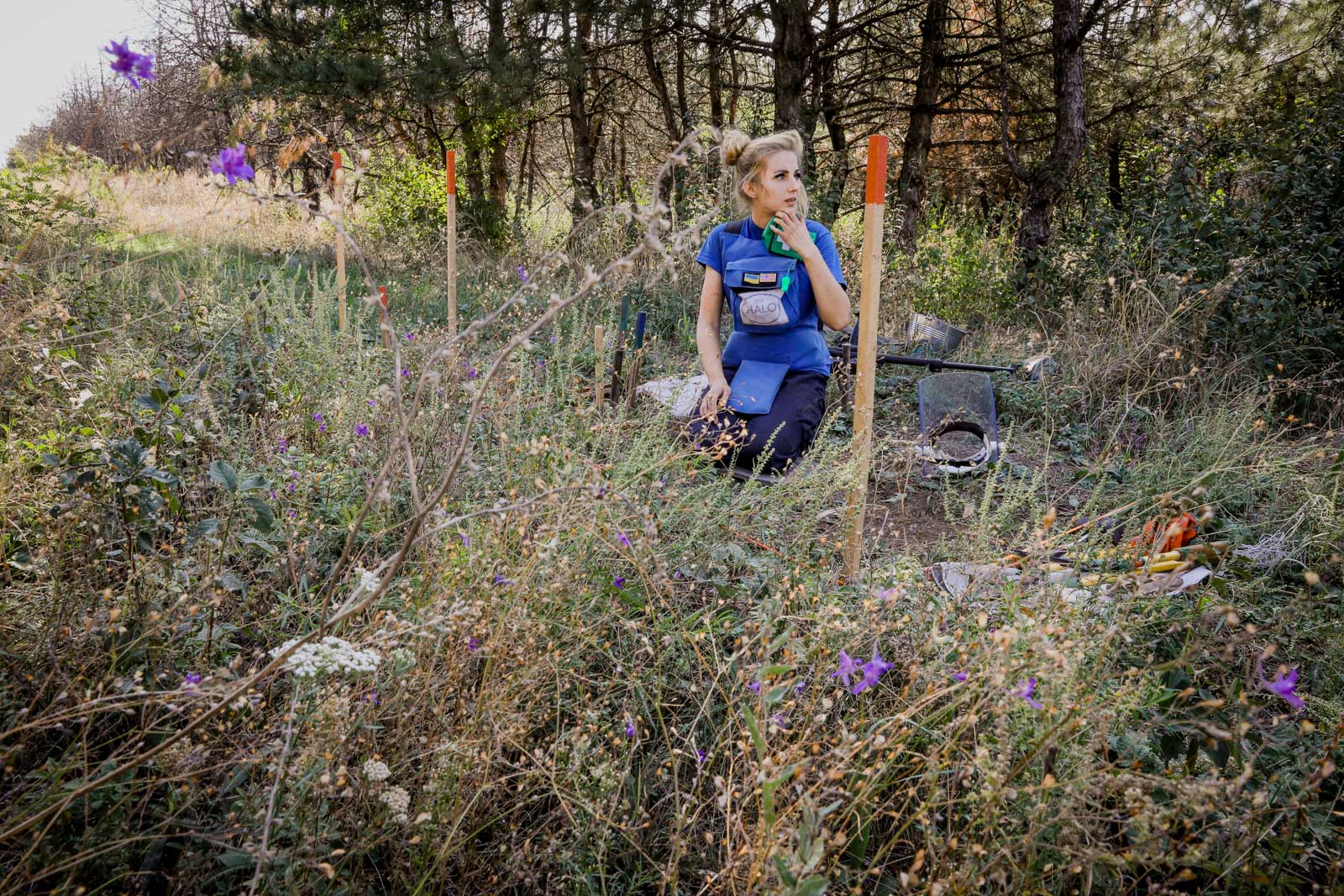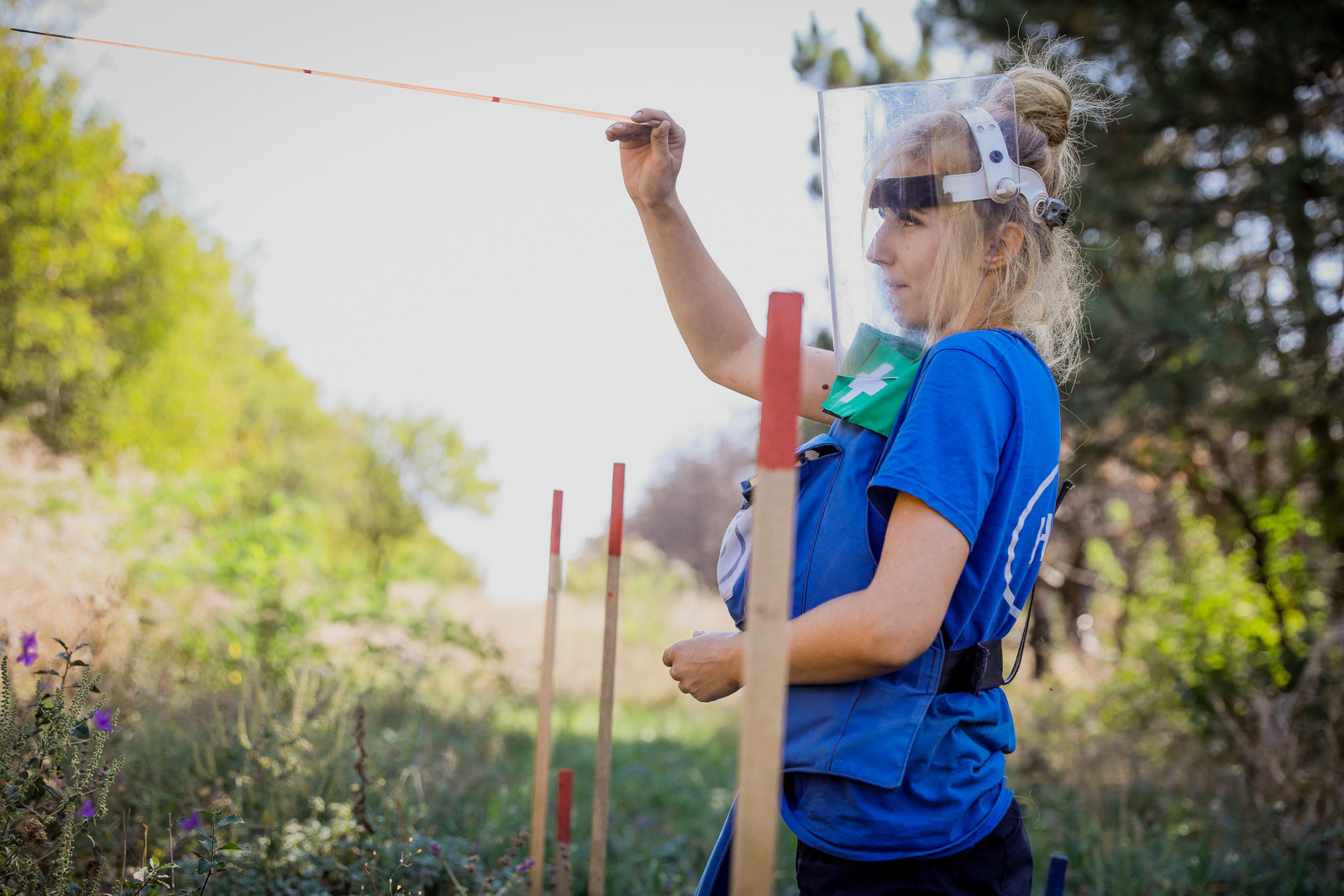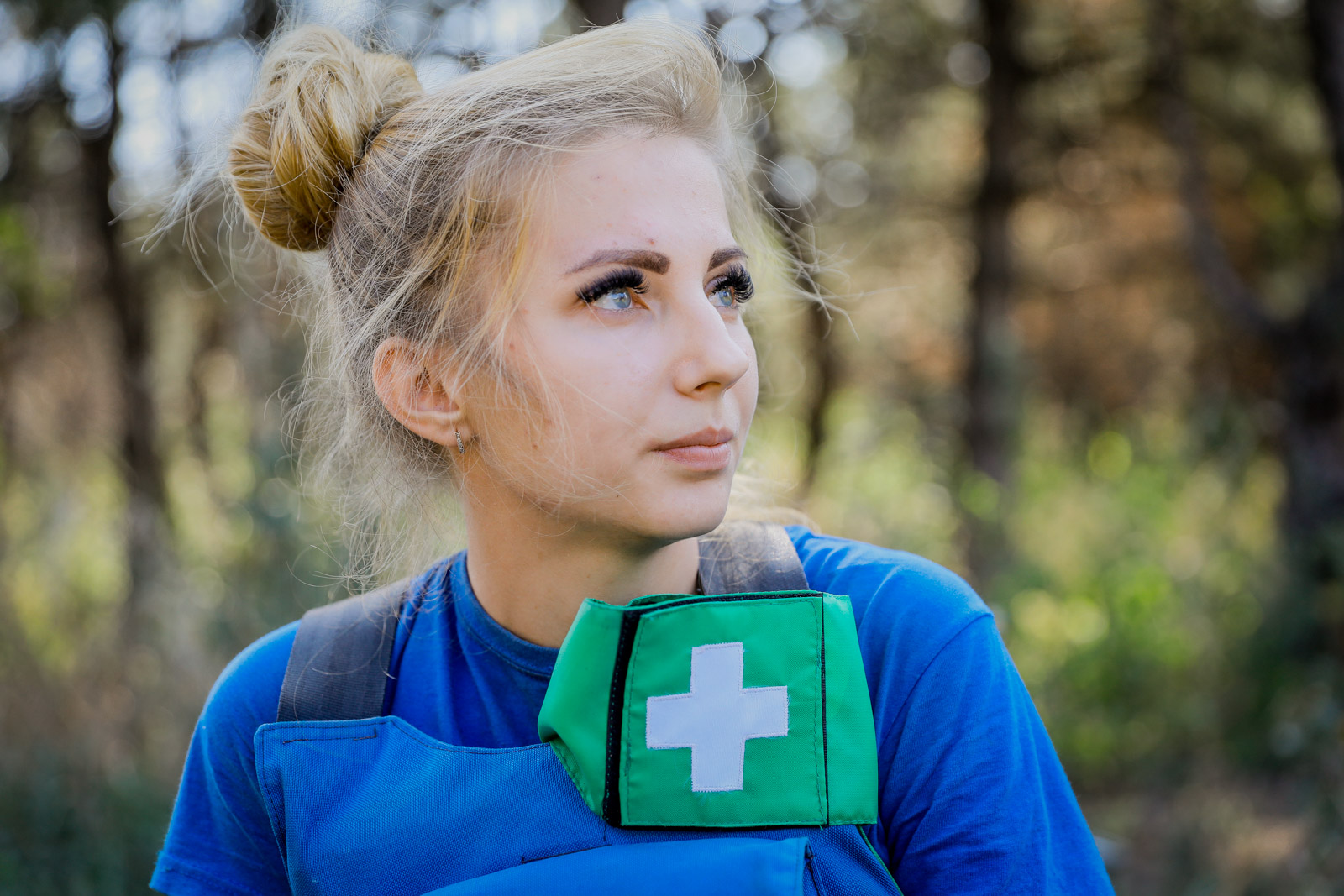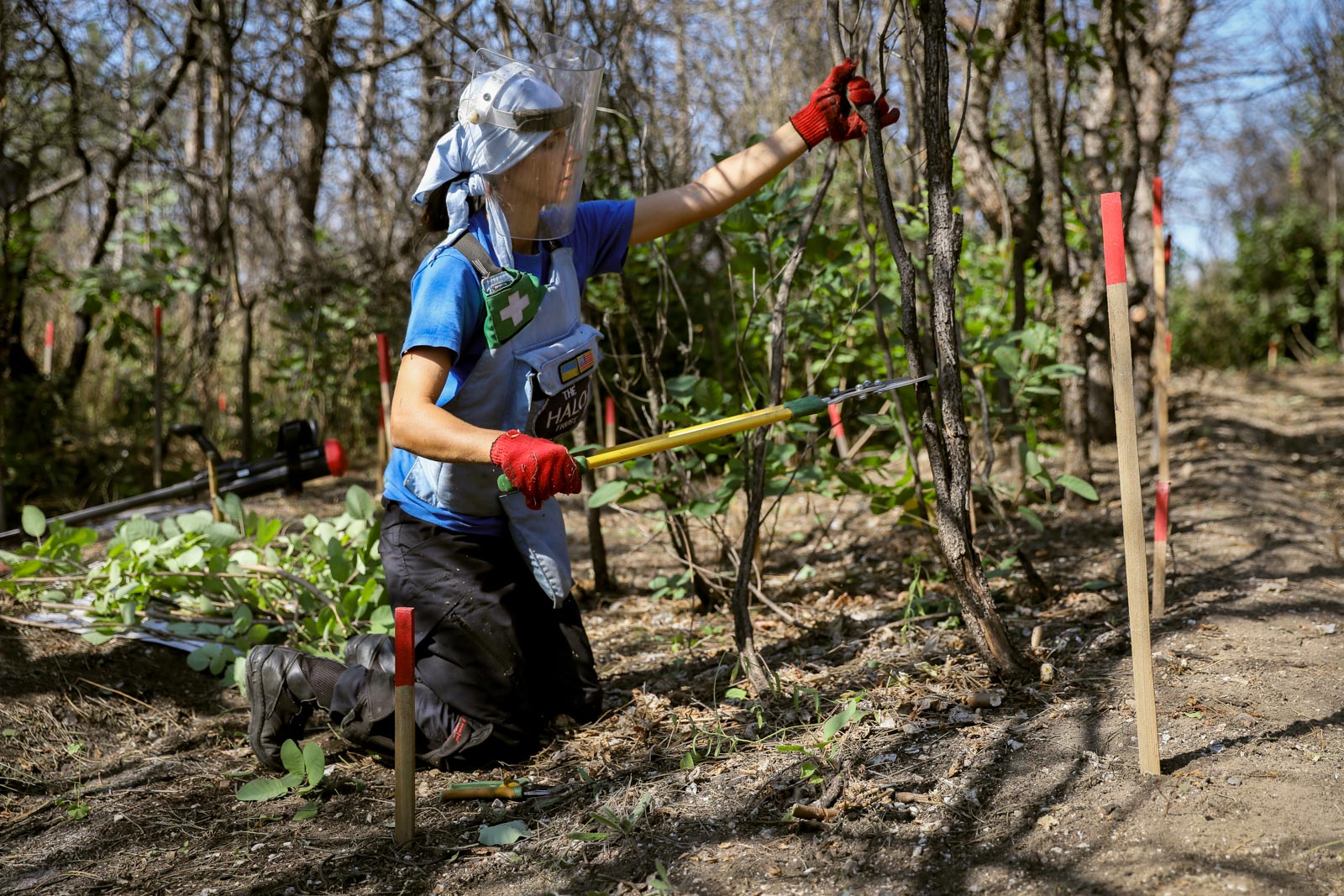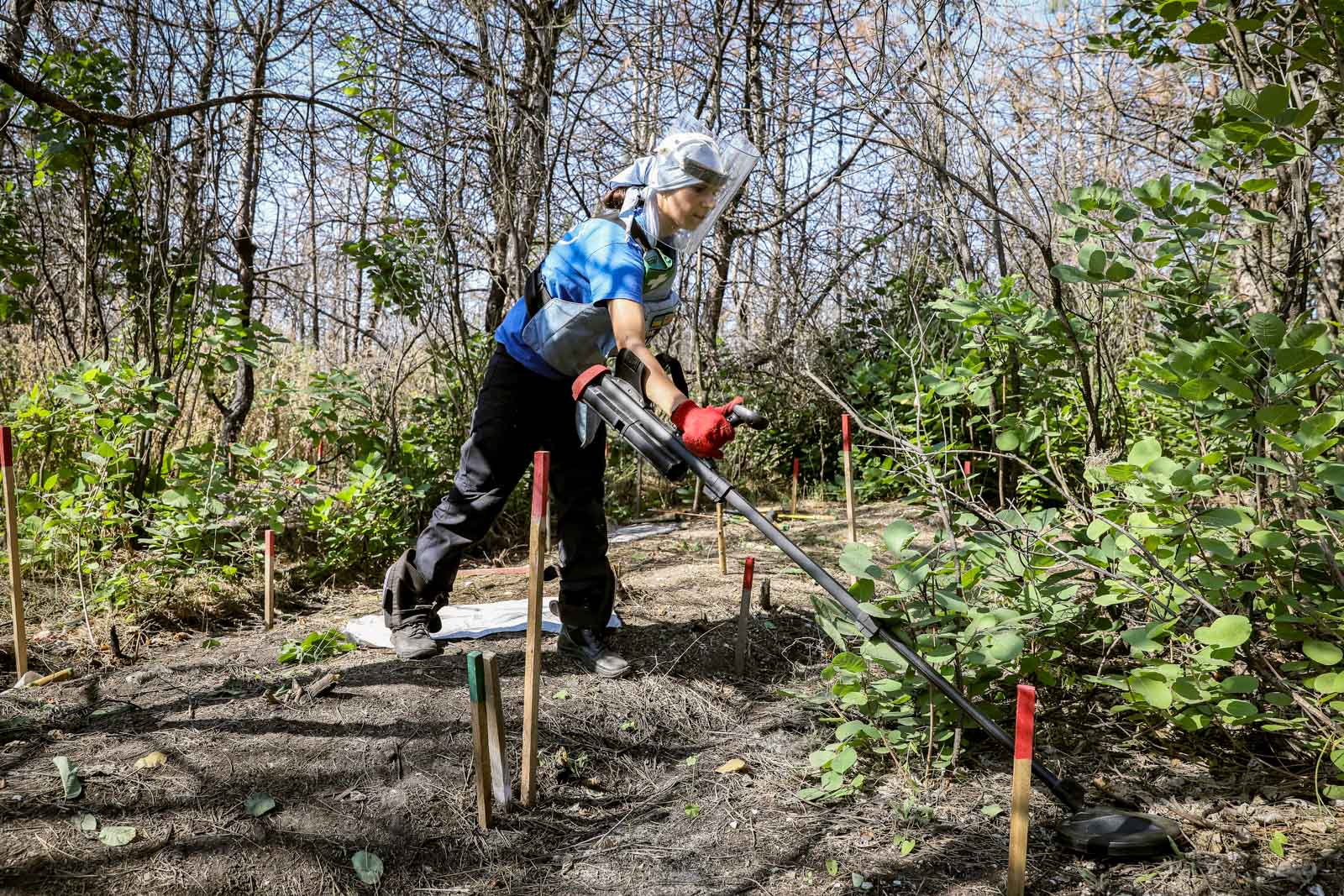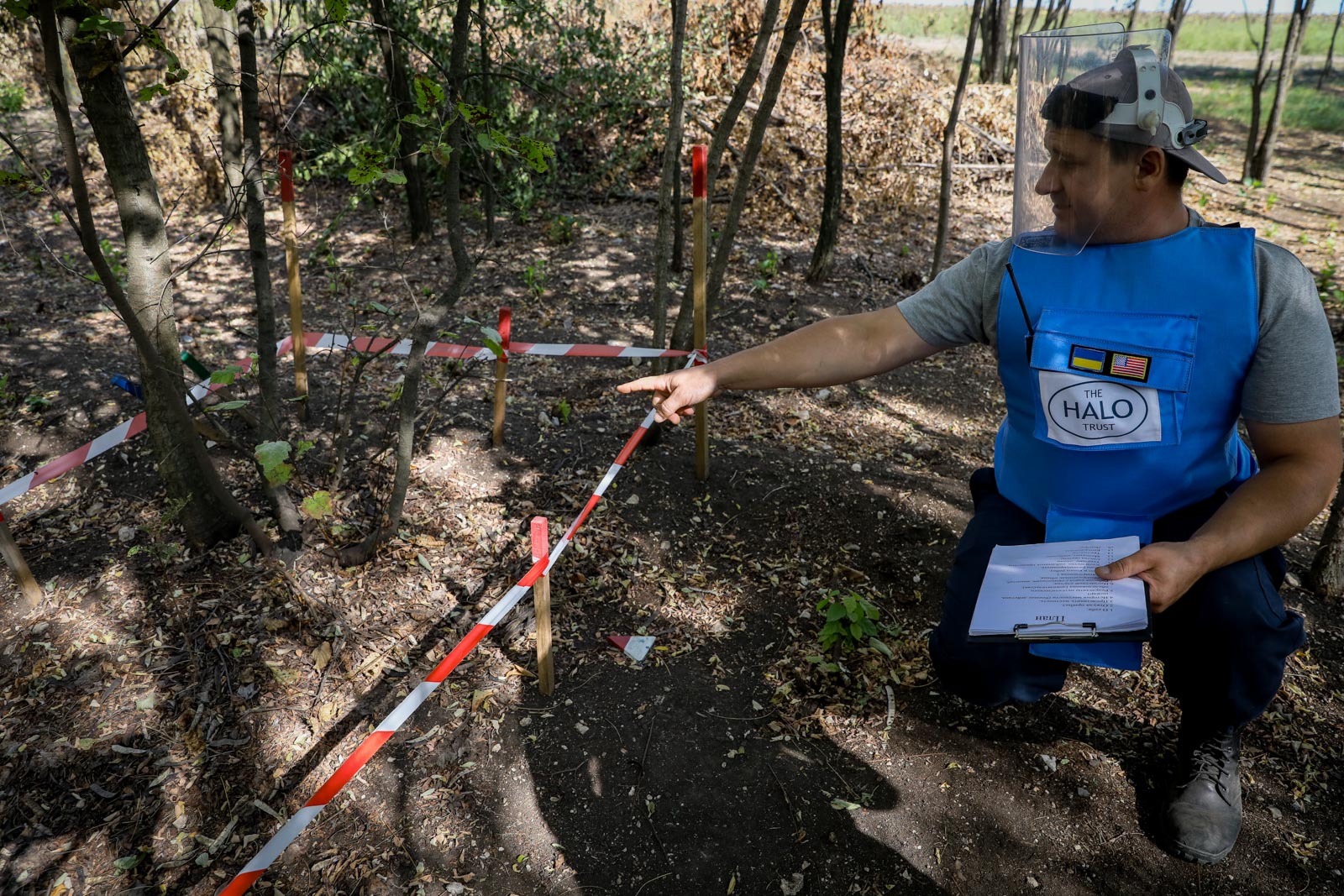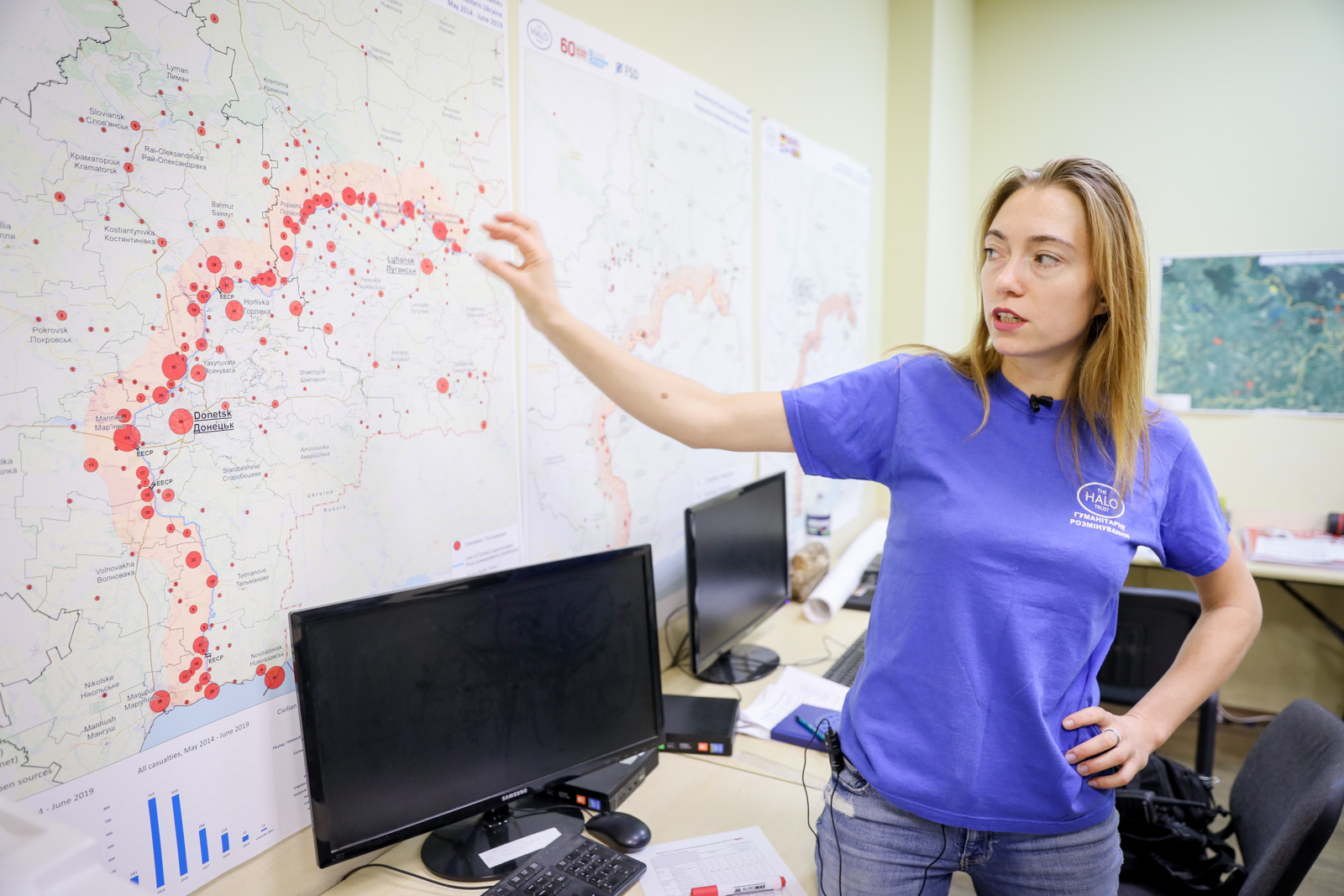KARACHUN, Ukraine — Anastasia Demina kneels to the ground and carefully probes leaves and soil with her right hand. Then she takes a plastic stick, puts it on the ground and slowly lifts it to see if it hits any wires.
She moves slowly and with caution. One wrong move could prove fatal.
Demina, 23, is looking for the tripwires of anti-personnel landmines, which are abundant in the war-torn Donbas. The stick she uses is meant to detect the thin tripwire that triggers the landmine’s if touched.
“Searching for the tripwire landmines is the slowest, the longest and the most difficult process,” Demina said. “You need to concentrate and never forget about safety.”
Demina is one of many civilians who were trained to look for mines. When she spots one, she reports it, and sappers arrive.
The woman works on the hill of Karachun near Sloviansk, a city of 111,000 people located 620 kilometers to the east of Kyiv.
Back in spring and summer 2014, it was a spot of intense fighting between Ukrainian forces and Russian-backed militants. At the time, Sloviansk was occupied by the militants and Karachun served as the stronghold of Ukrainian artillery positions.
In July 2014, Ukraine recaptured Sloviansk. Gradually, the front line moved far away from the city and was eventually cemented by the deal the sides reached in Minsk in February 2015.
But Karachun still remains a dangerous zone, contaminated with landmines and unexploded ordnance. In November 2015, two local men went to pick mushrooms there and suffered leg wounds after stepping on the tripwire of a landmine.
Land of minefields
Since 2014, Ukraine has become one of the most mine-contaminated countries in the world, where about 700 hectares of land on the government-controlled part of Donbas alone are covered in landmines, Ukraine’s military estimates. In 2017, Ukraine had the third highest amount of mine-related casualties in the world, according to United Nations statistics.
As of June, 977 civilians have been killed and 1,528 have been wounded by mines or other explosive remnants of war, according to government data. UNICEF, the UN children’s fund, calculated that 166 children have been killed or injured by landmines as of September.
Mines can be found in fields, forests, abandoned houses and even on the streets of front-line towns. Farming, fishing, mushroom picking, picnicking and just playing ordinary children’s games have become hazardous for millions of people living in the war zone.
It will take decades to demine this territory, experts say. Military sappers and emergency service workers have no resources to carefully examine all the territory potentially contaminated with mines. They can only defuse the mines when someone else finds and reports them.
Several international organizations now operate in Ukraine, teaching and equipping local civilians to conduct humanitarian demining in areas far from the frontline. Demina works for HALO Trust, a British demining charity, which was established in 1988 and promoted by the late British Princess Diana.
Demina’s job includes searching for landmines, but she can’t defuse them herself. When her group detects a dangerous object, they call the sappers from the state emergency service.
Wearing a special visor to protect her eyes and face and safety gear that covers her chest, Demina says she’s not afraid of doing her job. “The most important thing here is to follow the rules and listen to your supervisor,” she said.
Women deminers
Demina, who lives in Sloviansk, said a friend told her about humanitarian demining back in February 2018. At that time, she was on maternity leave and her initial reaction to the job was skepticism. But after the woman attended a training, she felt she wanted to know more about demining and realized it was not as dangerous as it first seemed.
She studied for two months and became deminer and also a paramedic. She can give first aid to her colleagues in case of an accidents.
The deminers make about $500 a month, which is decent money in poverty-stricken Donbas. They work in shifts for no more than eight hours a day and take breaks every hour. Another advantage of their work is lots of fresh air.
“We spend every day amid nature, which is good,” Demina said.
Dmytro Herasymiuk, Demina’s supervisor, said women are especially efficient in searching for the well-hidden tripwire landmines. In his demining group of seven people, five are women.
HALO Trust has 350 deminers currently working in Ukraine, the 52 of them are women.
The hill of Karachun has become one of the first spots where the organization started humanitarian demining back in summer 2016. On Oct. 31, the HALO Trust handed the first land plot fully cleared of landmines and other dangerous remnants of war over to the local communities. They plan to finish the second plot next year. That would make Karachun free of landmines.
Demina, who has a 3-year-old son, said her husband and grandmother long opposed her new job. But they eventually calmed down when she managed to persuade them that the danger is minimal for anyone who follow the rules. After listening to her stories from trainings and work, Demina’s mother recently followed her example and started working at HALO Trust.
“We are doing good things here. We are cleaning the territory of dangerous objects,” Demina said. “People will be able to come here to have a picnic, to pick mushrooms and have some rest.”
